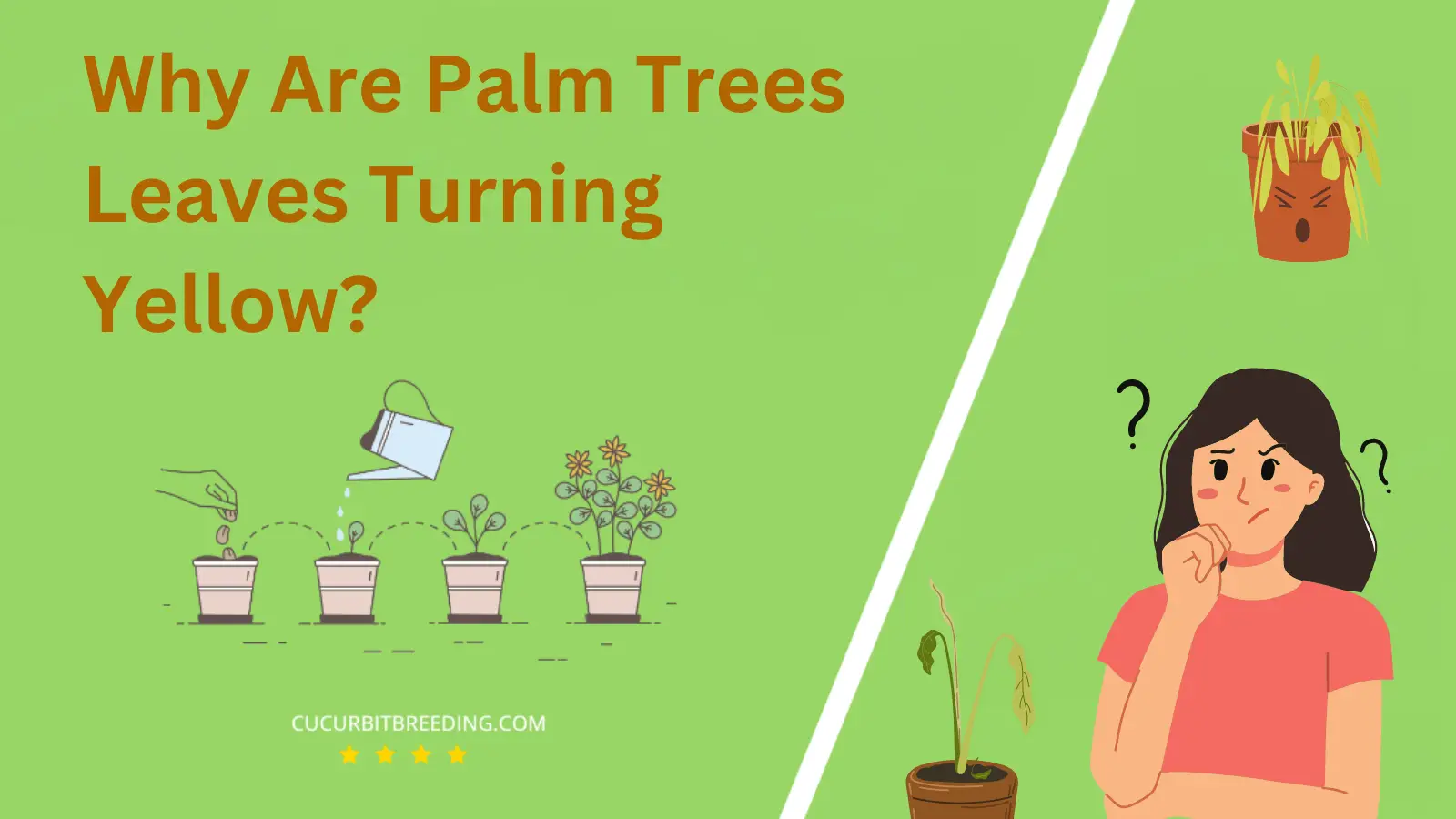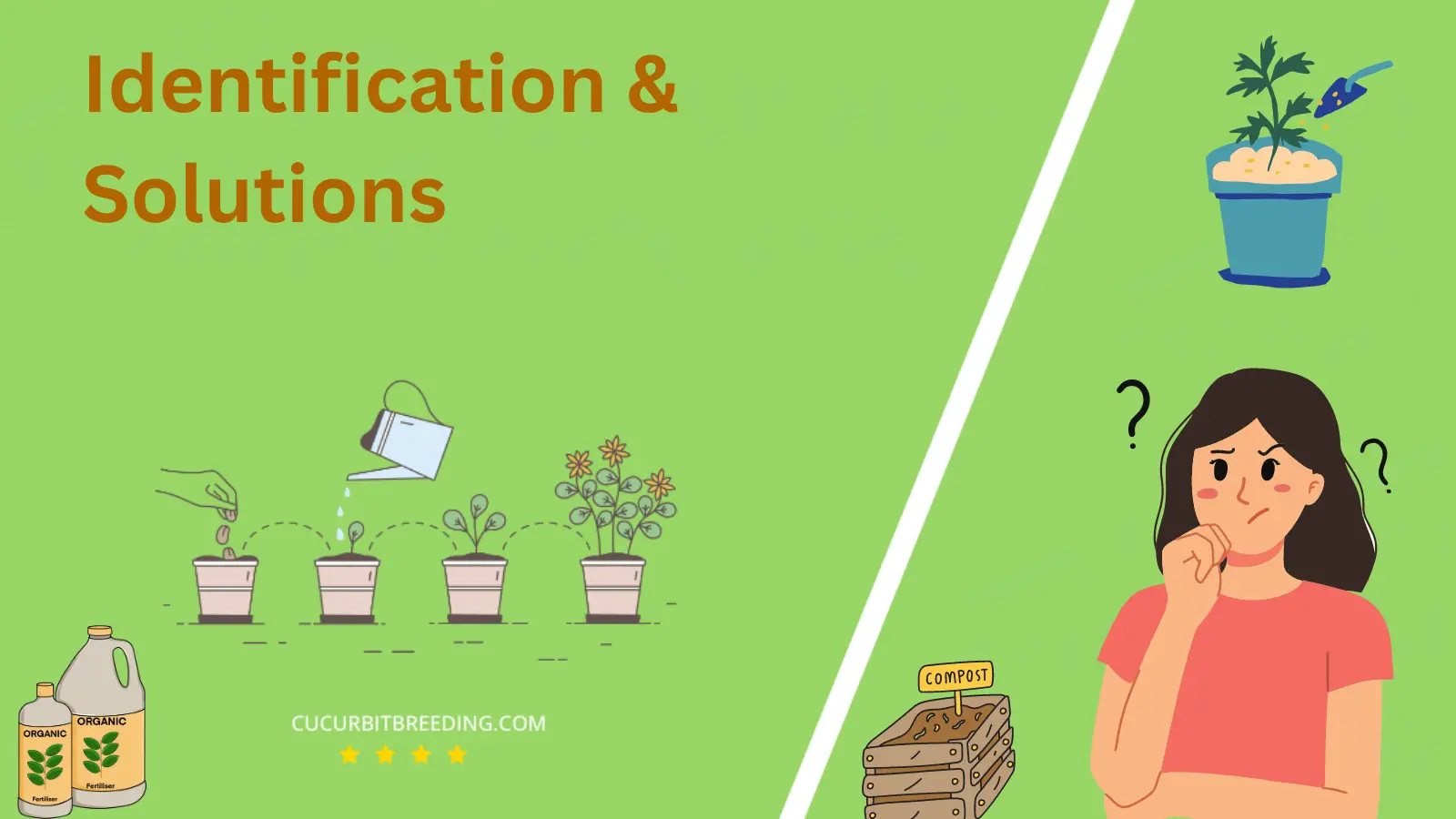
Palm trees turning yellow can be a distressing sight, particularly when these tropical beauties are the centerpiece of your landscape. Often surrounded by mystique and intrigue, these towering green giants are not just symbols of serenity, but also of healthy, thriving garden spaces. Can you imagine vacation postcards without a lustrous, green palm tree against an azure sky?
But when their emerald fronds start displaying patches of sickly yellow, it raises concerning questions. Is your beloved palm tree in jeopardy?
Why Are Palm Trees Leaves Turning Yellow?
1. Nutritional deficiencies
| Description | can cause chlorophyll breakdown, leading to yellowing of palm tree leaves. |
|---|---|
| Solution | Ensure proper fertilization and provide essential nutrients to address underlying nutritional deficiencies. |
Palm trees require a specific set of nutrients to maintain their vibrant green color and overall health. Nutritional deficiencies can cause a variety of symptoms, including yellowing leaves. Essentially, if the palm tree does not receive the necessary nutrients, it cannot produce the chlorophyll needed for photosynthesis. This leads to the leaves turning yellow.
To combat the issue of nutritional deficiencies, you’ll want to ensure your palm tree is getting a well-balanced plant food that includes essential micronutrients like iron, magnesium, and manganese. Regular soil testing can guide you on what nutrients your palm may be missing. Applying a slow-release granular palm fertilizer four times a year can also help in maintaining the nutritional balance.
Moreover, proper watering practices should be followed. Overwatering or underwatering can hinder nutrient uptake. Ensure the soil is well-draining, yet consistently moist – never waterlogged or completely dry. Appropriate planting methods are also beneficial. Make sure your palm tree is not planted too deeply or that the root ball is not buried as it can also contribute to nutrient deficiencies.
In severe deficiency cases, it’s important to get professional help. Local extension services can provide advice tailored specific to your soil conditions and area. Thus, providing your palm tree with the correct nutrients can help make its leaves green and healthy again.
2. Overwatering
| Description | can lead to root rot, preventing the plant from absorbing nutrients and causing yellowing leaves. |
|---|---|
| Solution | Reduce watering and ensure proper drainage to prevent root rot and improve palm tree health. |
Effects of Overwatering:
Overwatering is one of the most common reasons why palm tree leaves turn yellow. Soil that is constantly wet doesn’t leave room for air. As a consequence, soggy soil suffocates the roots, depriving them of the oxygen required for healthy growth, leading to root stress and damage. Palms in this distressed state exhibit symptoms such as yellowing leaves. Roots in overwatered soils may also rot, affecting the supply of nutrients and water to the plant, causing further leaf yellowing.
Solutions:
To remedy this, it’s critical to maintain a proper irrigation schedule, ensuring the soil doesn’t stay wet for long periods. The best bet is to let the top soil dry out before watering again. Ensure your palm tree is planted in a well-draining soil and pot. If you’re using a pot, make sure it has ample holes for excess water to drain away easily. Lastly, it’s important to note that palm trees usually need less water in the colder months. By managing watering procedures judiciously, overwatering issues can be prevented, thereby preventing the issue of yellowing leaves.
3. Underwatering
| Description | Insufficient water supply prevents proper nutrient absorption, leading to yellowing of palm tree leaves. |
|---|---|
| Solution | Increase watering frequency to provide sufficient moisture for the palm tree leaves. |
The reason for your palm tree’s leaves turning yellow could be due to underwatering. Underwatering can cause stress to the palm tree, leading to weakened growth and causing its leaves to turn yellow due to a lack of essential moisture and nutrients.
What the plant needs is consistent watering to maintain a moist but not waterlogged soil environment. It is crucial to ensure your palm tree’s water needs are met, but without overdoing it.
To combat underwatering, assess the dryness of the soil first before watering. When it’s time to water, do so thoroughly, ensuring the water penetrates deep into the soil. Lastly, consider the placement of your palm tree. If it’s in a pot, ensure it has adequate drainage holes to prevent water logging. Furthermore, adapt your watering schedule to the season and the plant’s growth phase.
4. Pest infestation
| Description | Insufficient water supply prevents proper nutrient absorption, leading to yellowing of palm tree leaves. |
|---|---|
| Solution | Increase watering frequency to provide sufficient moisture for the palm tree leaves. |
Palm trees turning yellow can often be a symptom of pest infestations. Certain pests such as mealybugs, spider mites, and whiteflies feed on the sap of the palm leaves, depleting their nutrients and leading to yellowing or browning. Over time, heavy pest infestation can cause the health of the palm tree to deteriorate significantly, leading to the yellowing and possible drop-off of leaves.
The first step in treating any pest infestation is to identify the type of pest causing the problem, as treatment methods may vary. Once identified, apply appropriate pest control methods. In mild cases, a spray of water could effectively remove the pests. For more severe instances, you might need a horticultural oil or insecticidal soap. If the infestation is extremely serious, a systemic insecticide may be required. Always remember, maintaining regular health checks and proper care for your palm can prevent pest infestations from happening in the first place or in the future.

5. Fungal or bacterial diseases
| Description | Increase watering frequency to provide sufficient moisture for the palm tree leaves. |
|---|---|
| Solution | Apply appropriate fungicide or bactericide to prevent or treat the yellowing of palm tree leaves. |
Yellowing leaves on palm trees may be a sign of fungal or bacterial diseases. These diseases can disrupt normal photosynthesis, causing chlorophyll—responsible for the green color in plants—to break down, leading to yellow discoloration. The palm’s health deteriorates, making it susceptible to other infections and reducing its vigor.
One solution is to use systemic fungicides or bactericides. They infiltrate the plant’s system, combating the disease from the inside and halting further spread. Apply these treatments as soon as signs of infection appear, following the label’s instructions exactly.
Prevention, however, is better than cure. To prevent future infections, maintain proper tree care practices. Ensure your palms receive the right amounts of water and nutrients, remove dead or diseased fronds promptly, and sterilize pruning tools between each use. Good hygiene deters the spread of diseases and keeps your palms healthy.
6. Environmental stress (such as extreme temperatures or high winds)
| Description | can disrupt chlorophyll production, leading to the yellowing of palm tree leaves. |
|---|---|
| Solution | Provide adequate shade and protection from extreme temperatures and high winds to prevent yellowing leaves. |
Palm trees are tropical plants that thrive in warmer climates, and any deviation from this can trigger discoloration in their leaves. Extreme temperatures, be it too hot or too cold, can cause the palm tree’s leaves to turn yellow. This happens because such conditions disrupt the normal functioning of the plant’s photosynthesis process, causing nutritional deficiencies leading to the yellowing of the leaves.
The solution to this problem would involve altering the environment around the palm tree to make it more suitable. Firstly, if the palm tree is indoors, ensure that it is placed in an area that maintains a consistent and tropical temperature. If the palm tree is outdoors and subject to cold temperatures, especially during the winter months, consider using protective measures like frost blankets to lessen the impact of the cold. Meanwhile, if the tree is exposed to extreme heat, ensure it is watered more frequently to help alleviate any dehydration stress.
7. Natural aging process
| Description | The natural aging process of leaves causes them to turn yellow due to reduced chlorophyll production. |
|---|---|
| Solution | Maintaining a healthy lifestyle with regular exercise and a balanced diet can slow down natural aging. |
The yellowing of palm tree leaves can be due to improper watering practices. Just like any other plant, palm trees require a precise amount of water to maintain their health. Too much or too little water can lead to stress on the plant, causing the leaves to turn yellow as a result.
Overwatering can cause root rot, which restricts the plant’s ability to draw in necessary nutrients, leading to yellow leaves. On the other hand, too little water can lead to dehydration, causing the same discoloration.
To rectify this problem, you need to establish a consistent watering routine. Ensure that the soil is well-drained to prevent waterlogged roots. A good rule of thumb is to water the palm deeply but infrequently, allowing the soil to dry out somewhat between watering. This will prevent over-saturation and root rot. Monitor the condition of the leaves closely as you adjust your watering schedule.